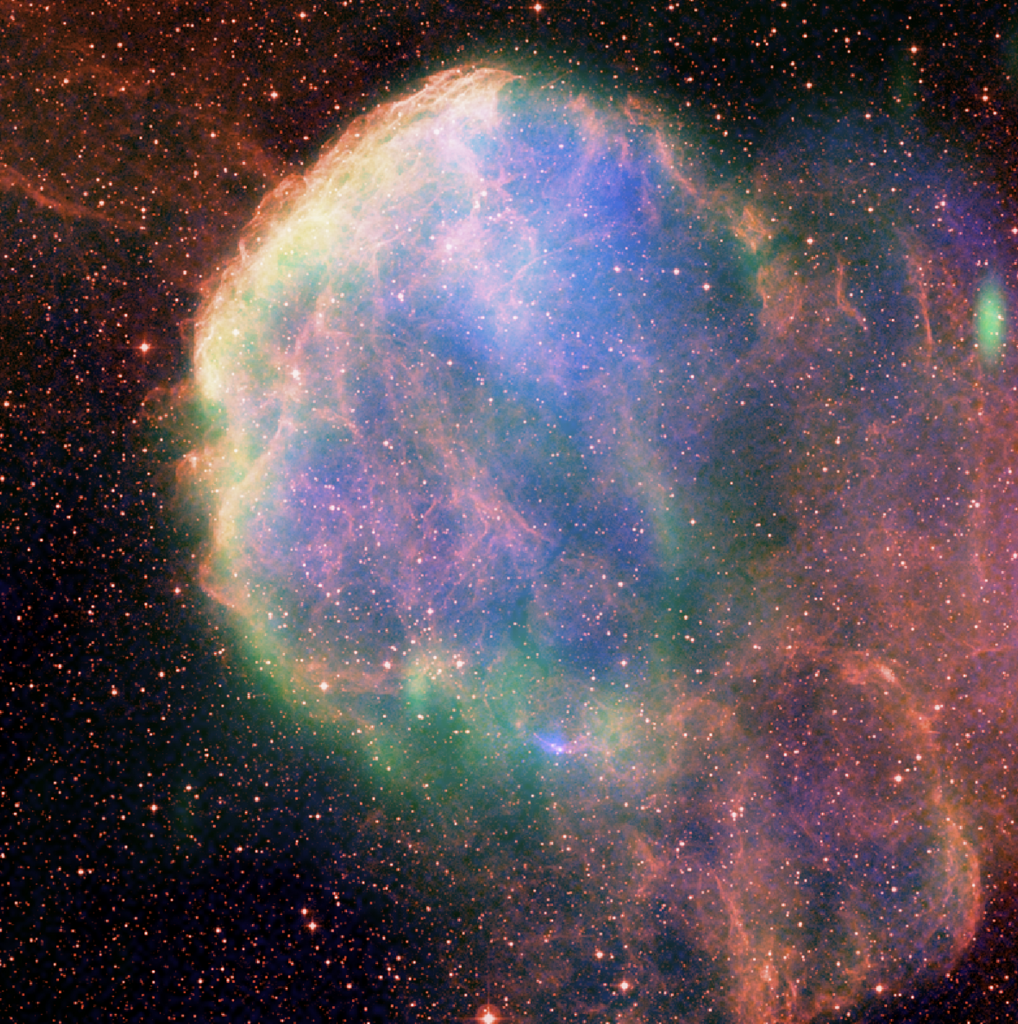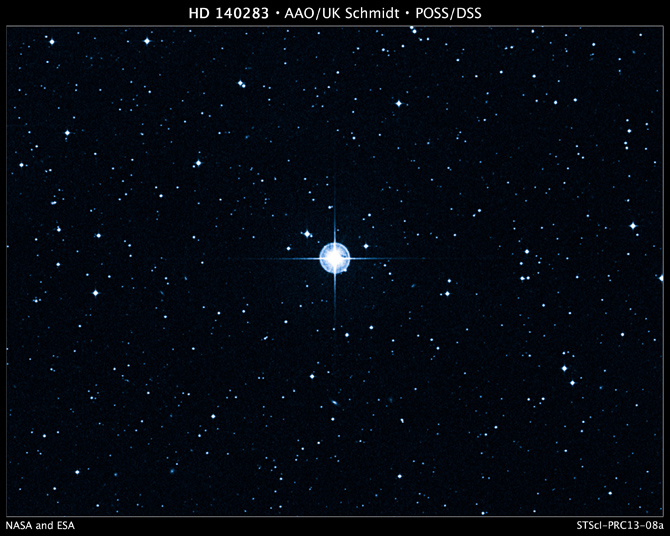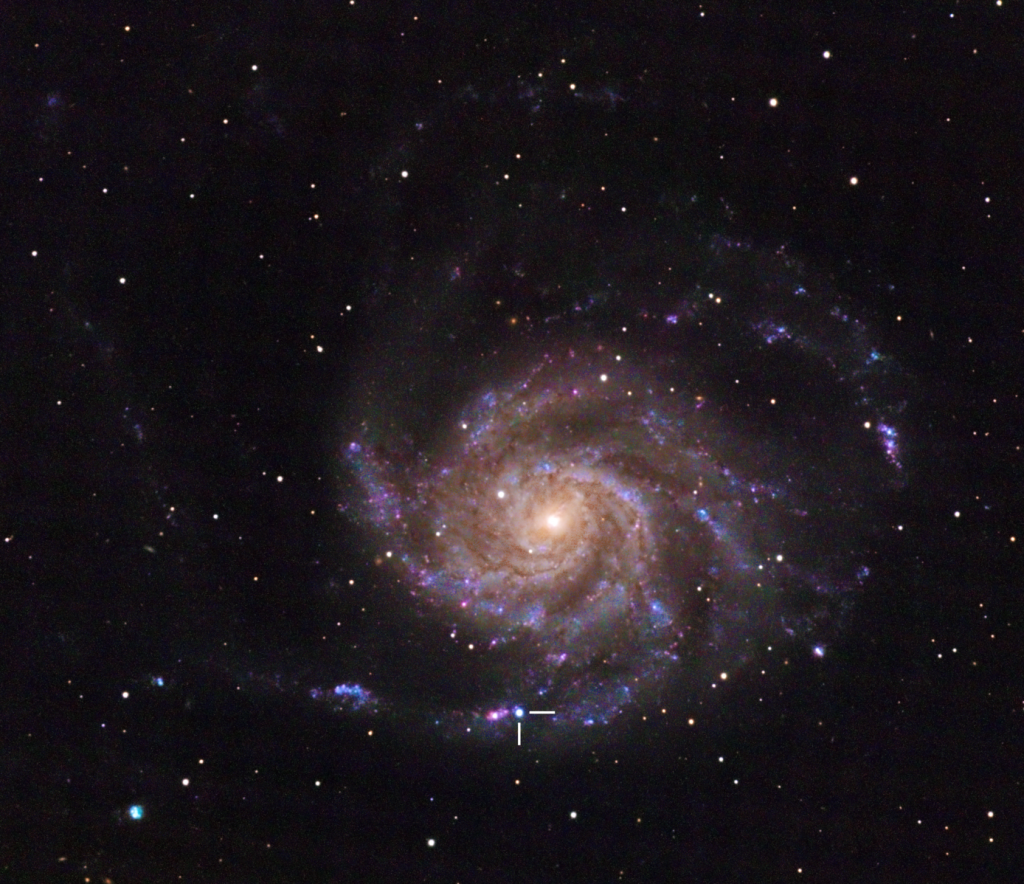
Not far from the bright star Propus in the feet of the constellation Gemini lies the supernova remnant IC443, also known as Sharpless 248, but which is more evocatively known as the Jellyfish Nebula. While it’s a difficult object to see visually, this cosmic echo of a long-dead star presents a superb target for imagers because of its turbulent and complex structure. The nebula, which is about 5,000 light years away, is adjacent to a rich region of new star formation called Sharpless 249 in the Orion Spur of the Milky Way which makes the whole region even more photogenic.
The Jellyfish Nebula got its start when a massive star ran out of fuel, quickly collapsed, and detonated as a supernova about 30,000 years ago in a gas-strewn patch of the Milky Way. The shock wave from the explosion collided with clouds of interstellar gas and set them aglow to produced the intricate lacework of nebulosity that makes up the nebula. Most of the glowing gas is hydrogen, but there are also traces of light from ionized oxygen, sulfur, and other elements.
[Read more…] about The Sound of the Jellyfish Nebula



